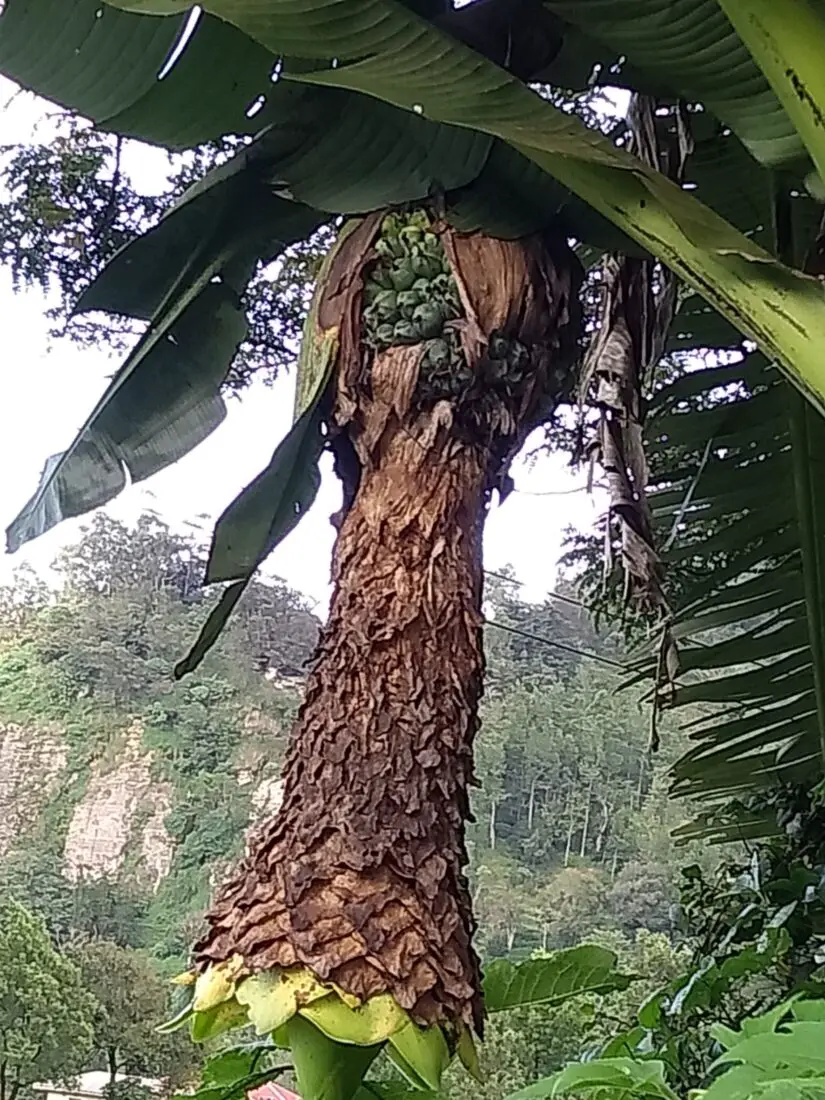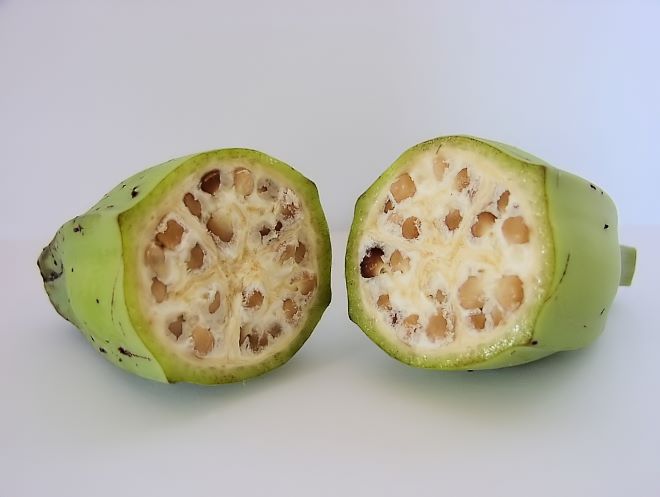Bananas are so ubiquitous in our lives that it is almost impossible to imagine a time when they were not part of our diet.
Most of us have heard that the banana we eat today is not entirely in its natural form but came in as a result of artificial cultivation and breeding from their original wild varieties.
Since humans decided to neglect the wild banana variety and focus on mass cultivation of hybrids, most people know very little about wild bananas.
But did you know that wild bananas are actually available and edible?
Yes, you can eat wild bananas, and they are quite tasty. Wild bananas are more petite and tarter than the ones you find at the grocery store. However, they are just as nutritious. While you can eat them raw, they are often preferred cooked to bring out their sweet natural flavors.
Wild bananas are not just cool-looking fruit, and they are loaded with nutritional benefits too. In this article, I will share some facts about wild bananas, whether you can eat them, and how to identify them.
What Do Wild Bananas Look like?

Wild bananas are much smaller than the ones you find in the grocery store, and they don’t have the same shape or structure as regular bananas.
They are usually finger-sized and do not grow in groups like the famous yellow Cavendish Bananas and other modern varieties we all know and love.
The wild banana plant is much shorter than its domesticated counterpart, but it has more leaves.
The leaves are broader and more rubbery, making them much more resistant to wind and helping protect the plant from adverse conditions in the jungle.
Wild Bananas vs. Modern Bananas
As earlier noted, there are two main types of bananas: wild and modern cultivated bananas. The former is like their wild cousins, with hard seeds, small seeds, and large leaves that spread out to form a canopy.
These kinds of bananas were found in Africa and Asia thousands of years before being introduced to Europe by Spanish explorers in the 1500s.
Modern bananas are smaller, sweeter, and fleshy with tiny seeds. They’re typically cultivated in large plantations or in greenhouses and sold in grocery stores.
The modern fruit is also bred to have very different nutritional content than its wild cousins.
Wild bananas contain large amounts of vitamin A, and vitamin B6 which give them their characteristic flavor, potassium, and magnesium.
On the other hand, modern bananas contain far less vitamin A and B6 — the nutrients that give them their taste, smell, and color but are packed with antioxidants.
What Do Wild Bananas Taste like?
Wild bananas do not exactly taste like the cultivated varieties we know. The modern banana is significantly sweeter than its wild counterpart.
Wild bananas have a starchy and almost creamy sweet taste that is not far from a cultivated banana’s taste.
If cooked, you will experience the silky starchy flavor reminiscent of modern plantains but a little bit mild.
Are Wild Bananas Poisonous?
As much as bananas have been known to contain some traces of radioactive isotopes, most of the modern and wild species have very low levels and are not poisonous to humans.
But since most poisonous elements such as cyanide are known to be in high concentration in fruits’ skin, it would be advisable you also avoid eating wild banana skin.
Can you Eat Wild Bananas with Seeds?
Yes, you can eat wild bananas with seeds. The wild banana is the ancestor of all modern cultivated bananas varieties, and the seeds are edible.
However, wild banana seeds have a tough outer cover that is unchewable. You might end up bruising your tongue if you tried to chew them with the flesh.
You may just swallow them like passion fruit seeds or suck out the starchy part covering them and spit the seeds out.
Modern cultivars have been bred to be seedless because they taste better and don’t bruise as easily.
Are the Seeds Poisonous?
The seeds of wild bananas are edible and not poisonous. As much as they are larger than their cultivated counterparts, they do not contain any toxic substances that can cause serious harm to humans.
Either way, you gain very little by eating the seeds. Their hard outer shell means they will just go through your digestion system and come out with poop.
Health Benefits of Wild Bananas
Wild bananas contain as much vitamins, minerals, and antioxidants like cultivated varieties. They are also high in fiber and have a lower glycemic index, making them a more nutritious option for people with diabetes.
Some other health benefits of wild bananas include;
- Wild bananas can help you maintain a healthy weight and lower your risk of obesity.
- Wild bananas can support heart health by lowering your cholesterol levels and reducing inflammation.
- They can help reduce instances of constipation due to their high fiber content.
- They help in preventing insomnia by boosting the production of melatonin, a sleep-inducing hormone.
What Banana Varieties are Not Edible?
Most bananas are edible, although a few have been cultivated as ornamentals. Musa balbisiana is grown for its long, thick pseudostems rather than for its fruit.
The leaves can be utilized in the same way as Cultivated Banana leaves, and the flower bracts can be eaten as well.
Several varieties taste bad or even bitter when ripe. Cooking may eliminate the bitterness. One of these is the Gros Michel, which was banned from cultivation worldwide during the 1950s due to the Panama disease.
The Cavendish banana was promoted as an alternative to Gros Michel after discovering that they were resistant to Panama disease.
Read Also: Why do Banana Fruits Grow Facing Upwards? (Negative Geotropism Explained)
Can You Grow Wild Bananas?
Yes, you can grow a wild banana in your garden. If the conditions around you are favorable for the herb to grow, it will definitely grow.
However, most people who have tried it have found out that the hardest part to beat is the seed germination phase.
I believe this is caused by the hard seeds that are hard to break dormancy out of their natural habitats.
So, if you want to grow a wild banana, you could technically do it. But here’s the thing: First, you have to find one in the wild (which may not be possible).
Second, you’ll need to figure out how to keep it alive long enough to fruit or how you will get the seeds ready for germination.
Check out this pink wild banana seed on Amazon. They can be grown as ornamental plants.
So, is it Safe to Eat Wild Bananas?
It is very safe to eat wild bananas, but you may not like the fact that they’re quite seedy and small.
You might like them in a fruit salad, but you wouldn’t want to eat them for dessert because of the seeds.
They may not grow or taste as good as commercially cultivated bananas, but they are quite palatable and not harmful to man.


Pingback: Do Bananas Have Seeds?